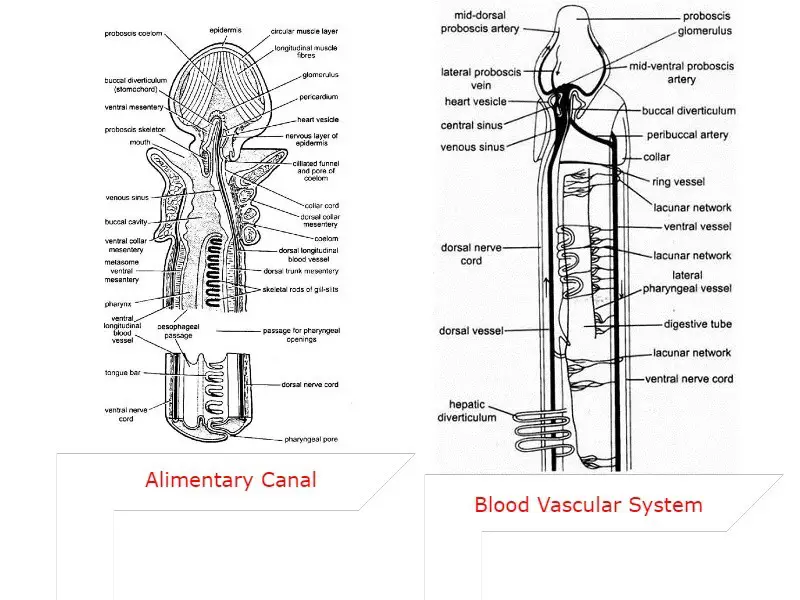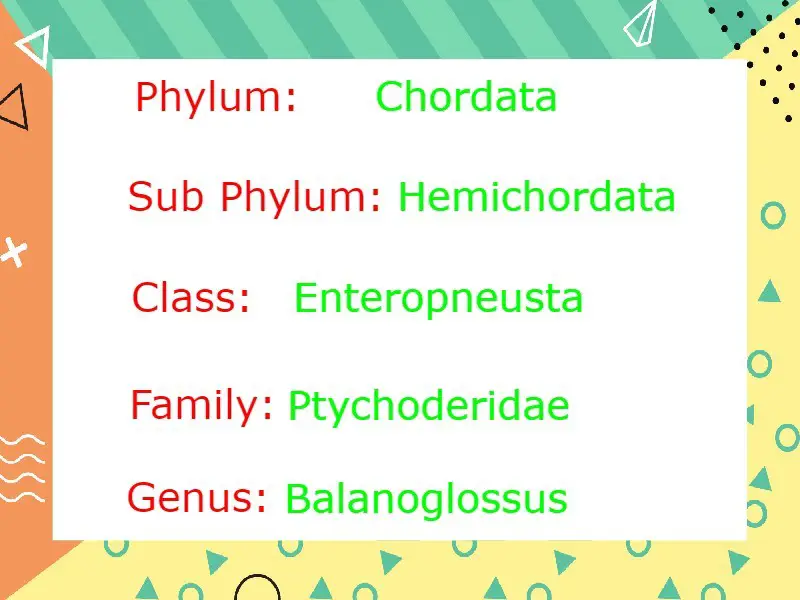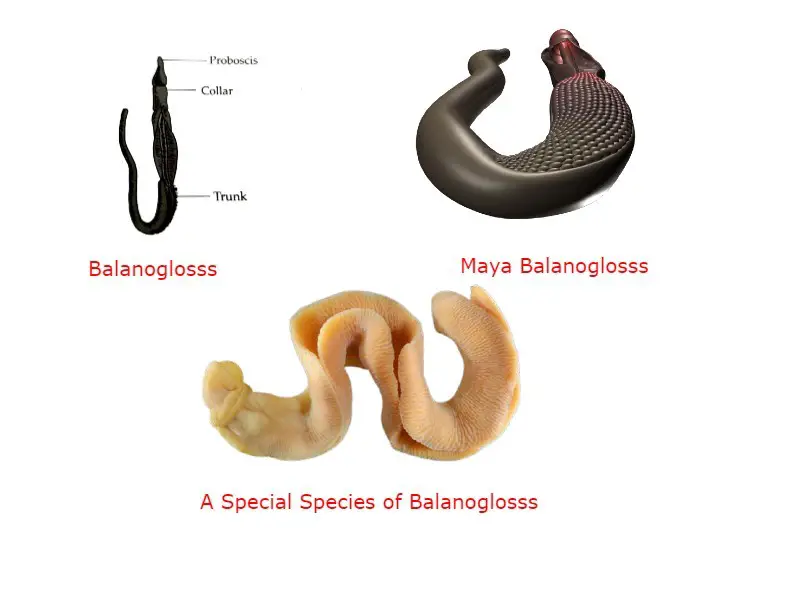When we think about the systematic position of Balanoglossus in the animal’s kingdom then we face difficulties due to their similarity with both Chordata and Non-Chordata. For this reason, some workers place them under Chordata while some other workers place them into a separate group from the Chordata.
Now we will focus on those affinities of Balanoglossus with Chordata which places them under Chordata and we will also focus on their drawback.
Due to the presence of phylogenetic relationships between Chordata and Balanoglossus, most of the workers placed them in Hemichordata.
Table of Contents
Affinities of Balanoglossus with Chordata:
The three fundamental features of phylum Chordata are the presence of Notochord, pharyngeal gill slits, and the dorsal hollow nerve cord. Based on the above three features some workers like William Bateson placed them in Hemichordata under Chordata.
Affinities of Balanoglossus with Urochordata:
Now we will focus on the features which are much similar between Balanoglossus and Urochordata. The organization of the central nervous system in Balanoglossus shows great similarity with the central nervous system of the Urochordata. The branchial system in Urochordata has a great resemblance with that of Hemichordata.

Affinities of Balanoglossus with Cephaochordata:
The development of the coelomic cavity in Balanoglossus is much similar to the development and structure of Cephaochordata. Like Urochordata Cephaochordata also show great resemblance in the structure of branchial apparatus with Balanoglossus.
So Balanoglossus show great resemblance with the subphylum of Chordata as well as the members of phylum Chordata which indicates that Balanoglossus is very close to the Chordata. From those affinities, most of the workers placed Balanoglossus in a subphylum Hemichordata under phylum Chordata.
Objections:
Based on the affinities among different subphylum of Chordata with Balanoglossus placed them under the phylum Chordata but time-intense research indicates that Balanoglossus is not Chordata.

Most of the fundamental features of phylum Chordata are similar to Balanoglossus but if we study the features in Balanoglossus then we will find that the Chordata features are not ideal.
- The most important features of Chordata is presence of notochord and the structure which we think as notochord in Balanoglossus is not actually notochord.
- The structure like notochord present in Balanoglossus is much smaller and only limited to the proboscis region.
- The main function of notochord is to give mechanical support to the body but in Balanoglossus the so called notochord dies not connected with mechanical support.
- The position of notochord in Balanoglossus is under the dorsal blood vessels and it is not covered by any seathe.
- In Chordata the notochord are made of vaculated cells and the notochord is not hollow but in Balanoglossus the so called notochord is made of the epithelial cells and have a hollow cavity.
- From latest research it is clear that the so called notochord in Balanoglossus is not actually notochord it is just a tubular hollow projection of buccal cavity. Now this stiff projection of buccal cavity is not know as notochord, they are named as Buccal Diverticulum by Hyman, stomochord by Willy.
- In Chordata the nervecord is hollow and presence dorsally but in Balanoglossus the hollow nerve cord is only limited to the collar region, the collar nerve cord.

- In Balanoglossus the ventral nerve cord present and the presence of intra-epidermal nervous tissue and circumcenteic nerve ring show close relationship of Balanoglossus with Non-chordate.
- The pharyngeal gill slits present in idea Chordata are present in lateral side of the body and the number vary from 5 to 7, but in Balanoglossus the gill slits present on dorsal side and they are numerous.
- Metamerism or metameric segmentation is an important features of phylum Chordata which is absent in Balanoglossus.
- Post anal tail is present in any stage of development in phylum Chordata but the tail in Balanoglossus is not post anal.
- In phylum Chordata we generally find exoskeleton and living endoskeleton, exoskeleton is absent in Balanoglossus, some structure are considered as endoskeleton in Balanoglossus but they are not idea endoskeleton.
- Paired appendages is also an important feature of phylum Chordata but it is absent in Balanoglossus.
- In the body wall of Balanoglossus dermis later is absent, only epidermis layers present but in Chordata dermis layer present.
Reference:
Detailed Information on
What is Balanoglossus: A Tongue Worm
External Morphology of Balanoglossus
Coelom and Coelomic Fluid in Balanoglossus
Digestive System of Balanoglossus
Respiratory System of Balanoglossus
Hi Everyone!!! Welcome to Imaluop. Imaluop always try to learn some new and he want to share to other people. Here we will try to learn various topics on Science, specially on Biological Sciences.
